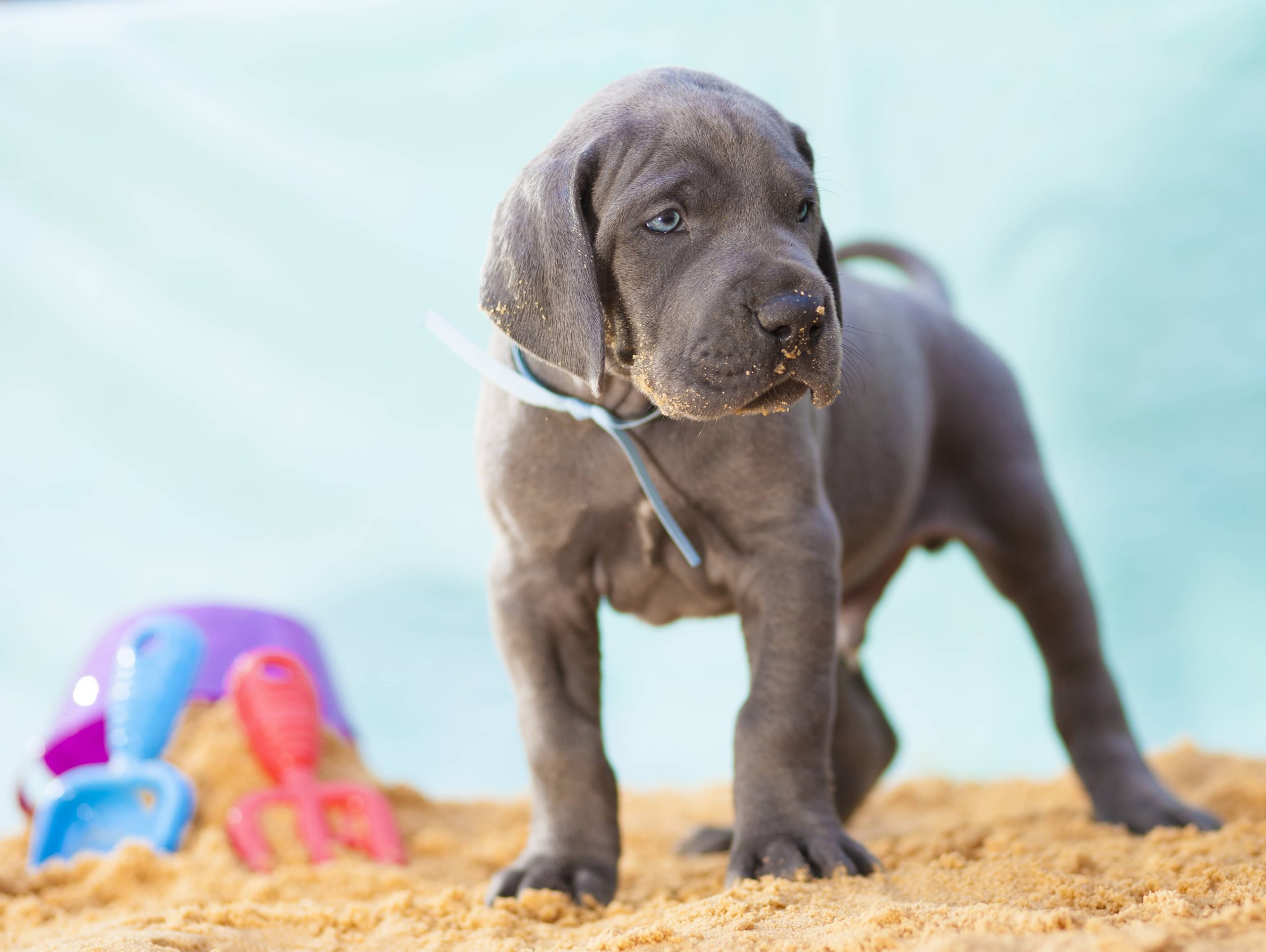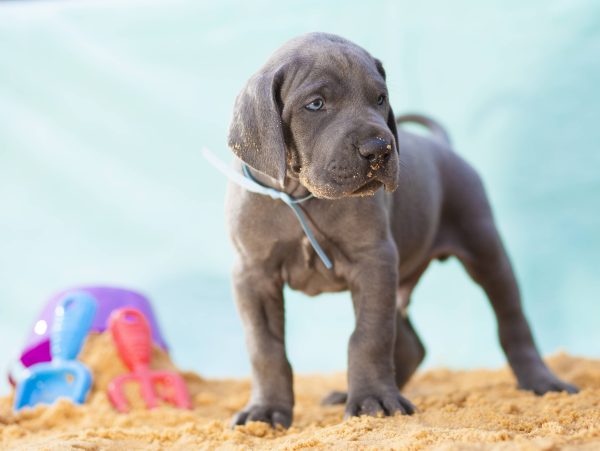Great Danes are larger dogs, so they tend to have more puppies than the average canine. Generally, larger dogs have more puppies simply because they have room for them, and the average Great Dane usually has up to 10 puppies in a litter. On the other hand, smaller dogs often have fewer puppies per litter.
However, there are a lot of variances from one dog to the next. To some extent, litter size is genetic. Some dogs just have bigger litters than others. However, the health and age of the mother and environmental factors can play a role too.
Of course, extremes do exist on both sides of the spectrum. There are reports of Great Danes having as many as 17 or 18 puppies in a litter. Other mothers may have smaller litter sizes closer to five or six. However, seeing a Great Dane give birth to a singular puppy is rare.
Factors That Affect Litter Size
As we’ve stated, there are many ways to affect litter size. While Great Danes do usually have larger litters, there are many factors that you should consider.
Inbreeding
Inbreeding occurs when puppies are born from two related dogs. Inbreeding affects the litter size of a dog heavily. Sadly, many purebred dogs are inbred to some extent—that’s how their traits became so standardized. However, some breeds are much more inbred than others. Luckily, Great Danes are not very inbred as a whole. However, specific Great Danes can be inbred if proper breeding practices aren’t followed.
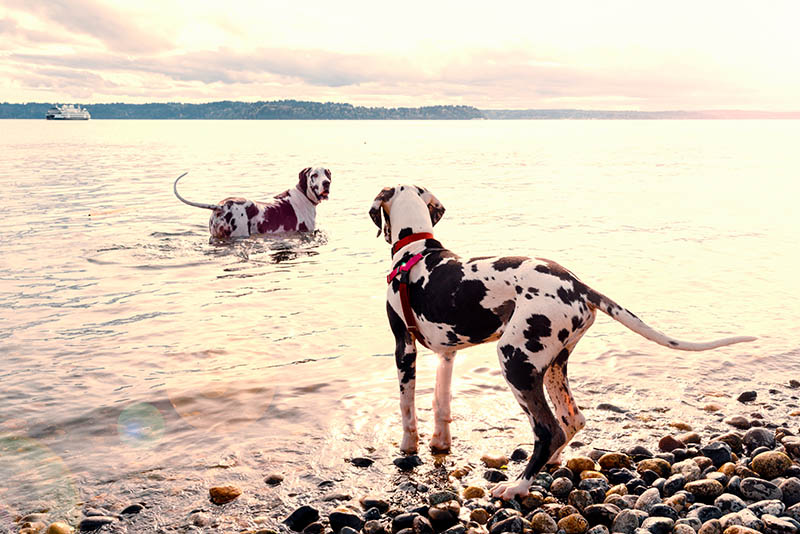
Female’s Age
Females at the height of their fertility will have more puppies. Great Danes who are bred between 2 and 5 usually have bigger litters overall. Those bred after 5 tend to have smaller litters.
However, females shouldn’t be bred until their third heat to ensure she is done growing herself. Otherwise, health problems may develop.
Male’s Age
The male’s age can also affect litter size. However, this effect is much lower than the female’s age. Sperm quality does decrease as a male becomes older. A 2023 study showed that males between 2 and 4 years old had higher sperm quality than younger or older dogs. Therefore, they may produce larger litters.
Female’s Health
The health of the mother is also paramount. Dogs that aren’t healthy may not be able to carry as many puppies to term. Quality breeders will perform the necessary health checks and vaccinations on their Great Danes before breeding them.
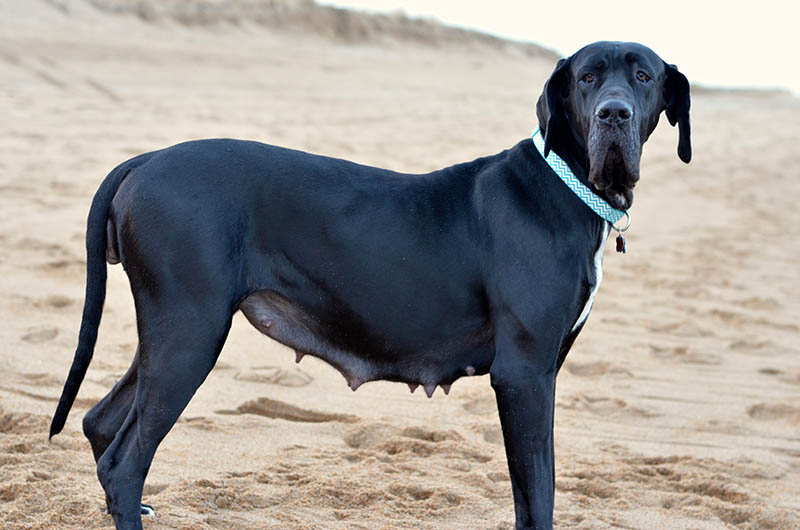
Female’s Diet
The female Great Dane’s diet also plays a role, as it will affect her overall health. When breeding a female, it is often necessary to provide a special diet. Often, puppy food is recommended, as it is higher in nutrients than adult dog food. However, care should be taken to ensure a balanced diet. Too much protein or supplements can lead to lower litter sizes.
Quality breeders will feed their dogs the appropriate food while breeding, which can help increase litter size.
Harlequin Great Danes
Great Danes with the harlequin coloration have some special factors to consider. Sadly, the harlequin coloration means these puppies are more susceptible to certain diseases.
Furthermore, puppies with two harlequin gene copies will often perish before they are born. Therefore, breeding two harlequin Great Danes together is likely to lead to a 25% smaller litter size since there is such risk of embryonic death.
How Long are Great Danes Pregnant For?
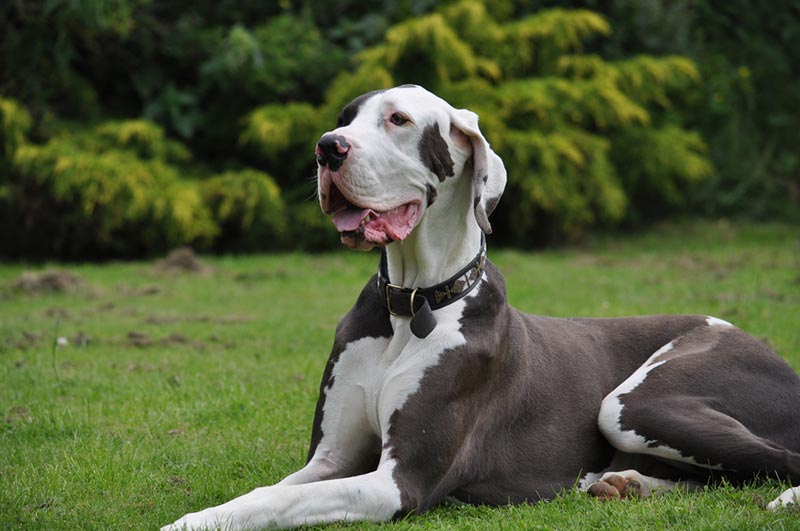
Great Danes are pregnant for about 63 days. Their pregnancy time is the same as any other dog, despite their larger size. However, pregnancy time is an estimate. Sometimes, conception is hard to determine. It isn’t always the day the dog was “fertilized.” Therefore, pregnancy estimations can be off by a few days—even for professional breeders.
For instance, sperm can live for several days within the uterus. Therefore, dogs may actually get pregnant several days after they are inseminated, even if it is done artificially. Eggs can remain fertile for about 2 days after being released. Therefore, the act of mating isn’t a measure of when the dog got pregnant.
If a breeder wants a specific gestation date, they may request hormonal testing through their vet. However, this costs extra and isn’t always the most accurate. Still, it is more accurate than simply going off the time of mating.
Dogs are pregnant for much shorter time spans than humans. Therefore, each day in a Great Dane’s pregnancy matters. One extra day could be the difference between the puppies being term or not being term. Therefore, it’s vital that females are allowed to remain pregnant for as long as they need to without going too far over. Having overdeveloped puppies can lead to birthing difficulties, as it can cause them to be too large.
How Many Litters Can a Great Dane Have a Year?
How many litters a Great Dane can physically have and how many she can safely have are different. Great Danes can have around two or three litters per year. However, this programming is assuming that some litters simply won’t make it at all. Furthermore, in a natural setting, dogs would die very young. Therefore, it was important for females to breed early and often.
However, this isn’t necessarily the best option for our dogs today. Having too many litters too often can lead to health issues. When the female isn’t allowed to recover completely, you risk her health and the health of future puppies.
It’s very similar to human pregnancies. While humans can get pregnant very quickly after giving birth, that doesn’t make it the best option. Human pregnancies within a year of each other are considered high-risk.
However, exactly how long to wait between litters varies. Some breeders recommend skipping at least one heat cycle. In theory, this ensures that the female is completely recovered before breeding her again.
With that said, if a female is obviously not recovered from the previous pregnancy, breeding the Great Dane again isn’t recommended. This isn’t a one-size-fits-all approach. Instead, you need to be attuned to your dog and make choices based on her best needs.
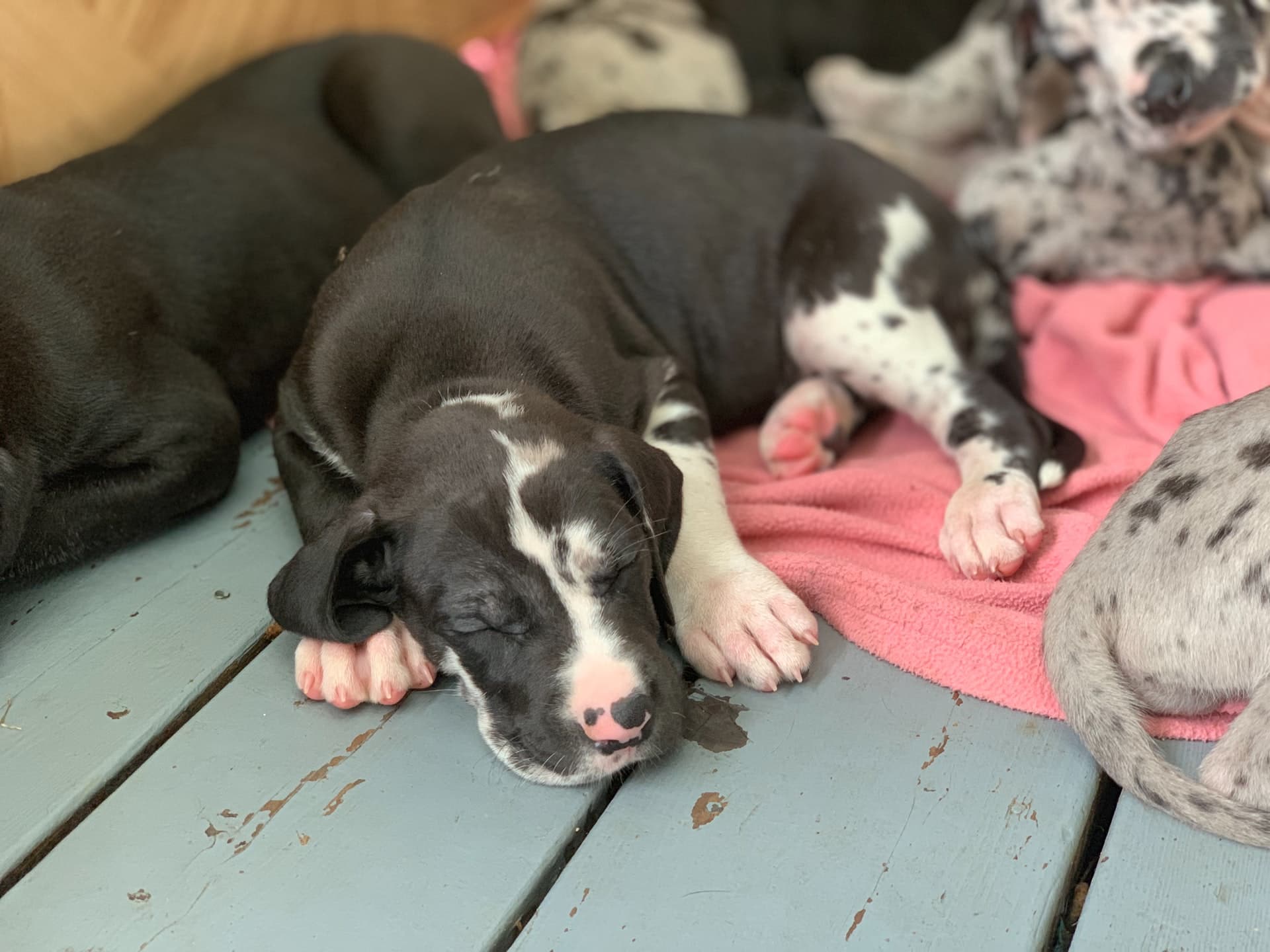
Conclusion
Great Danes usually have up to 10 puppies per litter. For the most part, their size is to thank for their larger litter number. However, this breed is also not very inbred. Therefore, they tend to have bigger litter sizes than more in-bred breeds.
Of course, litter size does vary a lot from puppy to puppy. The mother’s age and health play a large role in the size of the litter. For Great Danes, those with harlequin colorations tend to have fewer puppies, as they aren’t the most genetically sound. Keeping the female healthy can help ensure higher litter sizes.
However, some dogs just have smaller litters than others. Some sources indicate that about 15% of litter size is completely controlled by genetics.
Featured Image Credit: Guy J. Sagi, Shutterstock

